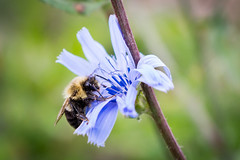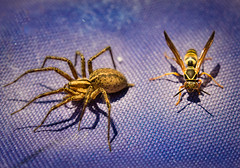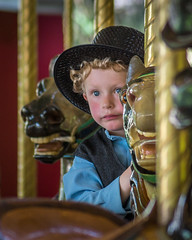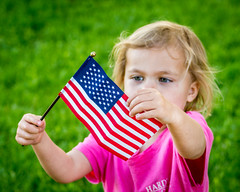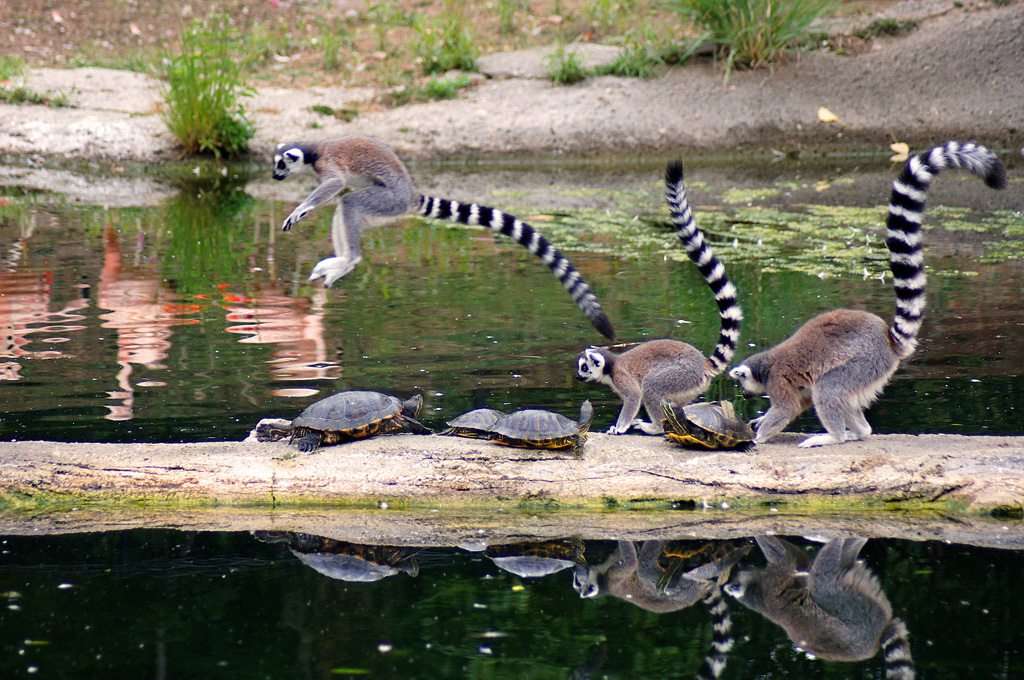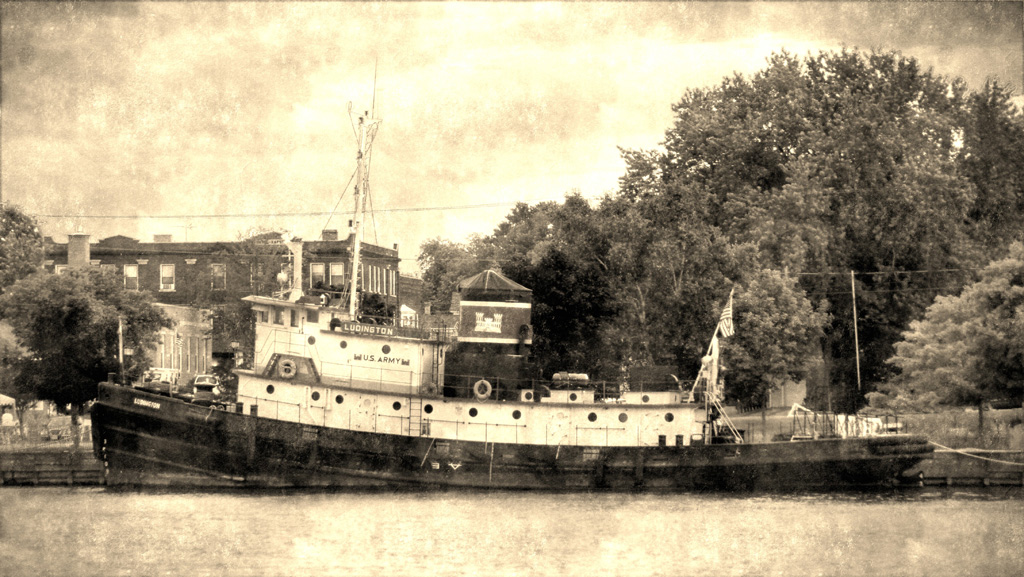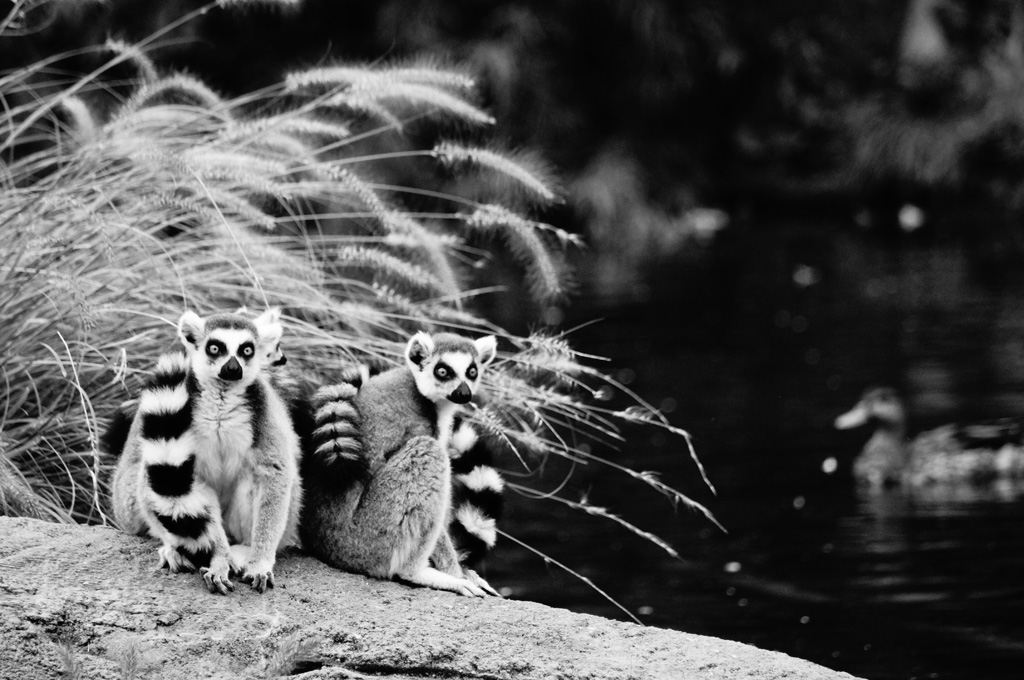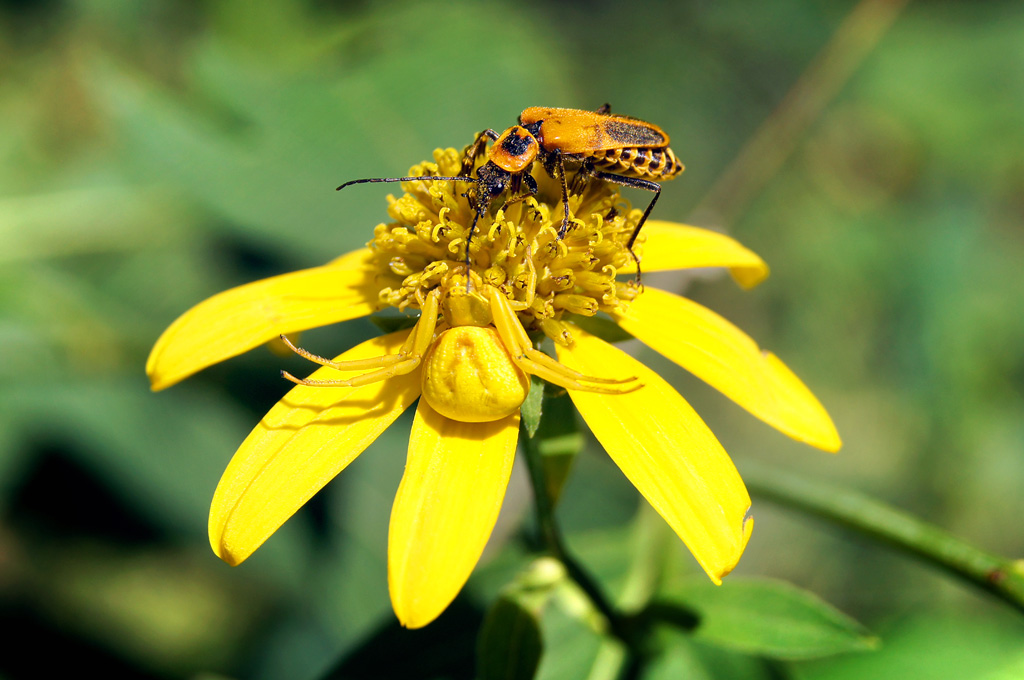Pops Digital
By a Thread
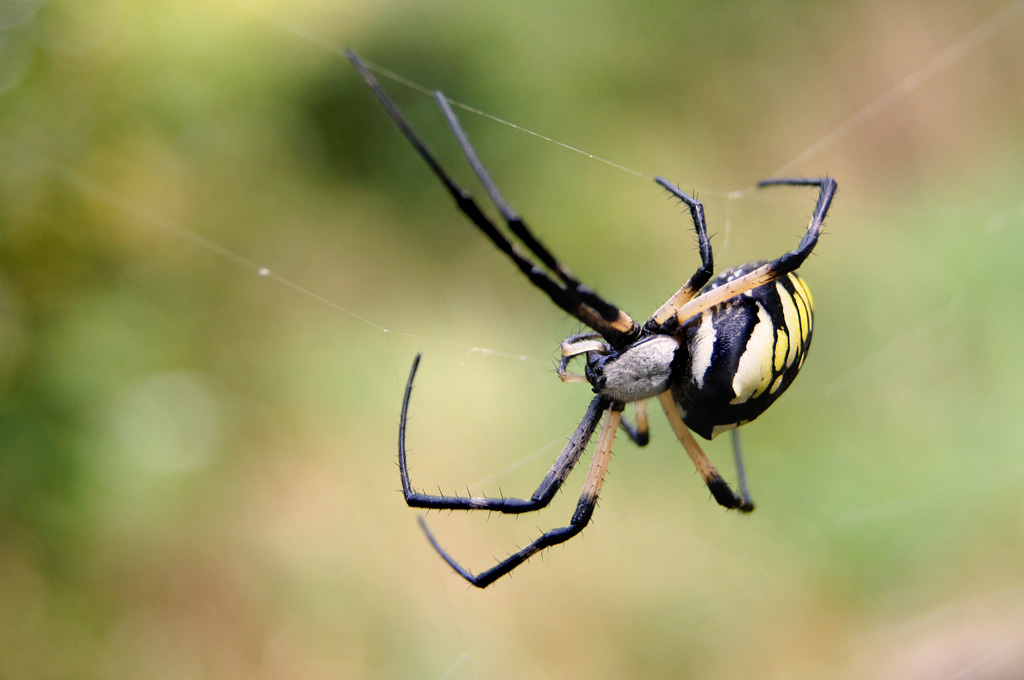 In the spider world, this is a common character. I’ve found and photographed this type in our gardens in Wisconsin. This one was photographed in the woods of Missouri.
In the spider world, this is a common character. I’ve found and photographed this type in our gardens in Wisconsin. This one was photographed in the woods of Missouri.
We typically refer to this as a Garden Spider. If you want to get technical, it’s a Black and Yellow Argiope (argiope aurantia).
If it won’t creep you out, you can view a larger version of this image by simply clicking on the photo.
Anglers in the Grey
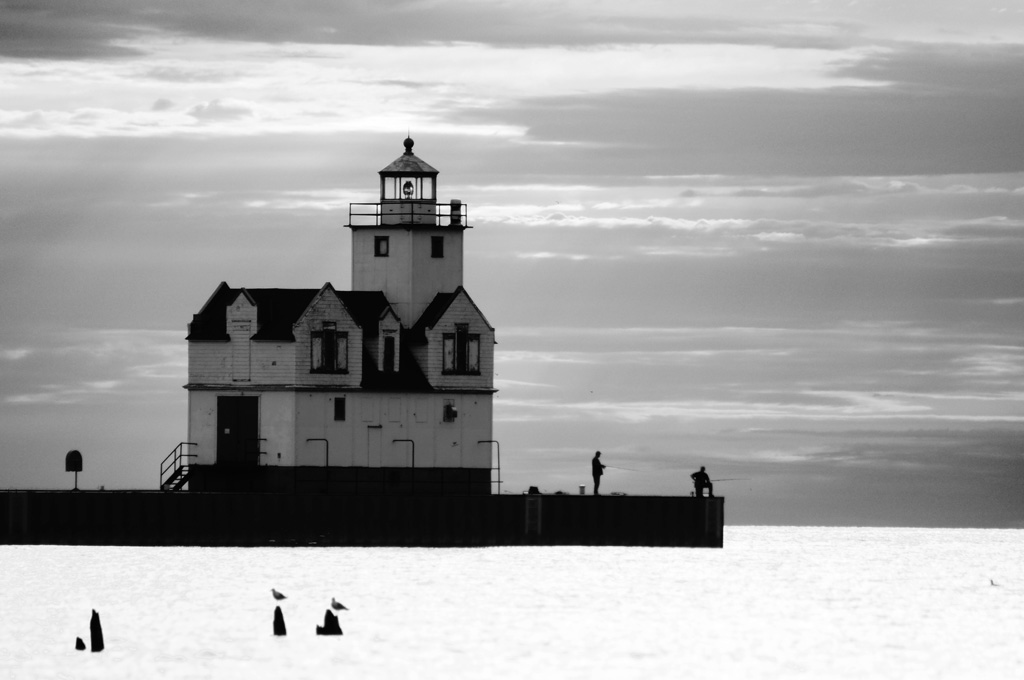 These anglers were at it early on a Saturday morning – fishing from the end of the Kewaunee, WI pier.
These anglers were at it early on a Saturday morning – fishing from the end of the Kewaunee, WI pier.
I’ve posted several other images taken on this same morning – in color and B&W. See Early Amber Rising, Gold Rush, Compelling Clouds over Kewaunee and Summertime Sunrise.
To get a better view of the fishermen, click the photo to see a larger image.
Leapin’ Lemurs
These Ring-tailed Lemurs didn’t care to walk among the herd of turtles on their path, so they took to leaping over them. The turtles just watched.
Notice the pink reflection in the water. Those are flamingos on the shore beyond the water’s edge.
I snapped a number of photos of the Lemurs on a recent visit to the zoo in Indianapolis, IN. You’ll see a few more images posted here in the near future, so check back often.
To view a larger version, click on the image.
Tug Ludington – History on Display

This is the Tug Ludington, docked in the harbor of Kewaunee, WI. I took this photo in early July of 2011. Of course, the image I snapped was clear and colorful. (See the smaller version.) But, because of the rich history of this vessel, dating back to the early ’40s, I decided a “vintage photo” effect seemed appropriate.
To keep with the vintage look, I had to eliminate a red car that appears in the original photo, just above the stern. I simply cloned the foliage near it over the car.
The Ludington now serves as a tourist attraction – open to summertime visitors every day from Memorial Day to Labor Day.
Here’s some of the historic details of the Tug Ludington found on the City of Kewaunee’s web site
Built at Jacobson Shipyard in Oyster Bay, New York, the Tug Ludington was fourth in a series of eight seagoing tugboats constructed specifically for World War II in 1943. After sea trials it was christened the “Major Wilbur Fr. Browder” by the U.S. Army.
The tug’s armament consisted of two 50 caliber machine guns mounted above the chartroom and pilothouse. Tugs were often strafed by enemy planes and submarines, but were considered too small a target to waste a torpedo on.
The tug participated in the D-Day invasion of Normandy, towing ammunition barges across the English Channel. It eventually ended up in Cherbourg, France where it assisted harbor operations until being sent to Plymouth, England for the duration of the war.
In 1947 the tug was transferred to Kewaunee, Wisconsin by the U.S. Army Corps of Engineers and was renamed the “Tug Ludington.” With its arrival in Kewaunee, the Tug Ludington assisted in the construction and maintenance of many harbors on the Great Lakes.
The City acquired the Tug Ludington from the Federal Surplus Program on December 29, 1995 with official transfer from the U.S. Government Service Administration Federal Surplus Property occurring on May 14, 1996.
After acquisition, the City, community volunteers, and donations from both individuals and organizations evolved in the proper mooring facilities being constructed and restoration of the Tug Ludington to make it available for public tours.
On March 28, 2002, the “Major Wilbur Fr. Browder/Tug Ludington” was placed on the National and State Register of Historic Places by the Secretary of the Interior.
Summertime Sunrise
Whether it’s a sunrise or a sunset, for me, it’s the clouds that make the scene worthwhile. This same setup with clear skies would be pretty bland. If you can add the silhouette of a lighthouse and the sun’s reflection off the water, all the better.
Even though I’ve photographed the sunrise over Lake Michigan near the Kewaunee, WI lighthouse many times before, it has never looked quite like this. In every case, the clouds make the difference.
Watch Out for the Duck
Doe Eyes
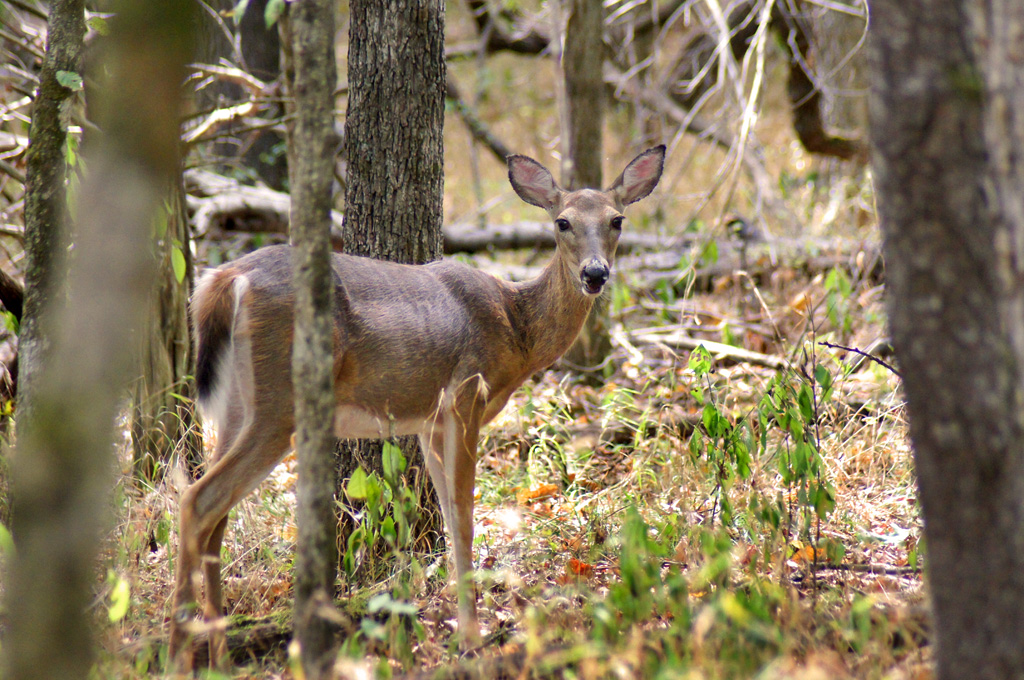 On a walk along the trails of a Missouri nature center, we encountered this docile woodland beast. One look at that face and the meaning of the term “doe-eyed” becomes crystal clear.
On a walk along the trails of a Missouri nature center, we encountered this docile woodland beast. One look at that face and the meaning of the term “doe-eyed” becomes crystal clear.
Here’s the American Heritage Dictionary definition…
doe-eyed
adjective
1. Having wide-open, innocent-appearing eyes.
2. Credulous and unsophisticated; naive.
For a larger view, click on the photo.
The Stand Off
While photographing wildflowers I noticed yellow spiders hiding among the foliage. I believe they are in the crab spider family. They seemed to be waiting for prey to come by. That was, in fact, the case. (See some of my previous posts.)
I’d been photographing these yellow spiders on purple thistles. Then I noticed a similar spider on a yellow flower. While I was taking his picture, a soldier beetle landed on the flower. I wondered what would happen.
After taking a few photos, I decided to switch to taking video. I remembered nature films I’d seen where an alligator snatches an unsuspecting antelope that stopped for a drink. I thought this, on a decidedly smaller scale, might provide the same kind of drama.
I only got a short, six seconds of video. It looked like the solider beetle bumped into the spider and then flew off. Not too dramatic. However, when I slowed the video down, it turns out it was a much closer call than I originally thought.
Watch the video below and pay particular attention to the slow motion footage. When slowed down, you can see the spider actually grabs the leg of the soldier beetle in its jaws. The beetle is able to pull away before the spider can get a better hold. The best way to view it is to click the full-screen icon in the lower right corner of the video box.
Click on the photo at the top to see a lager version.
Compelling Clouds over Kewaunee
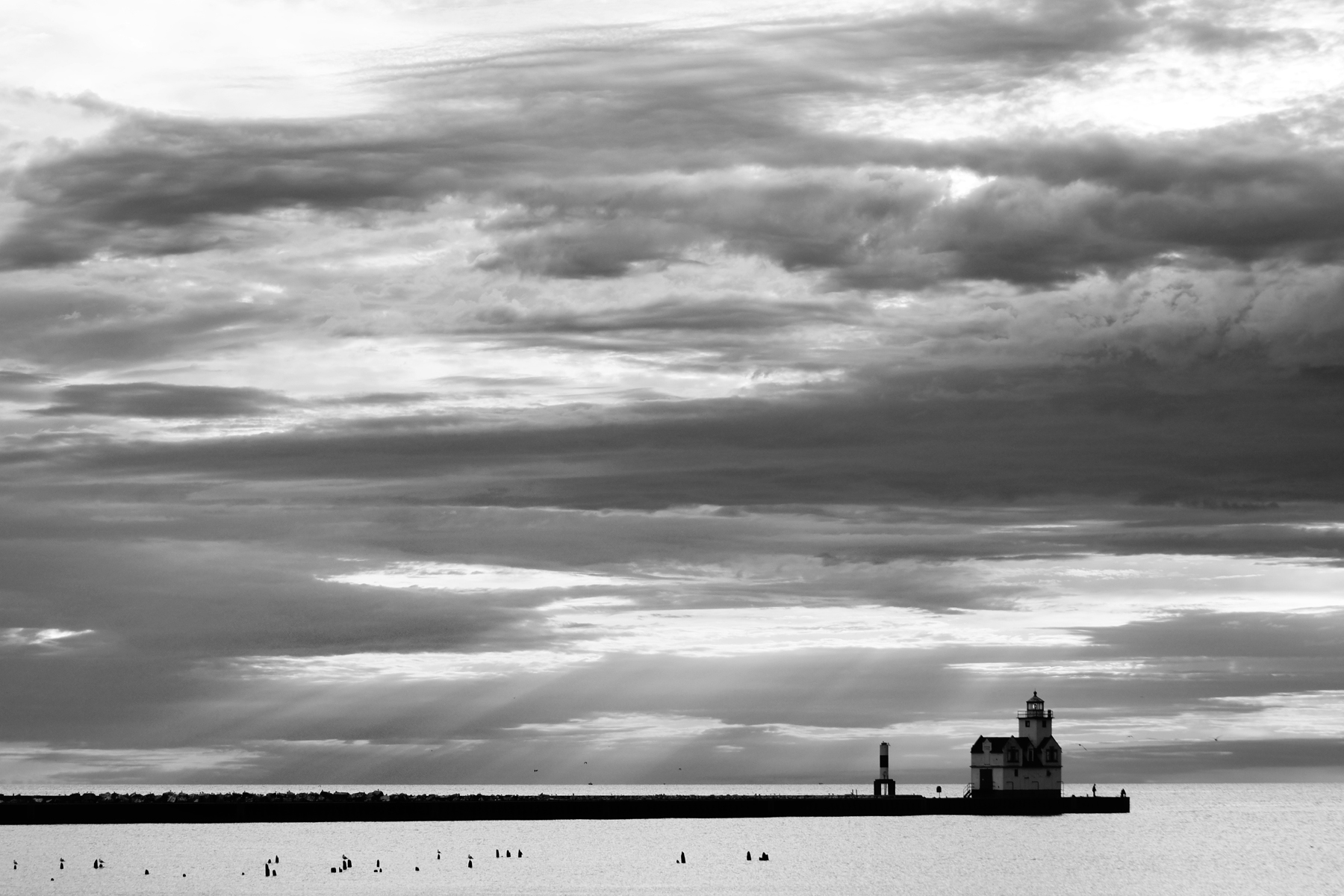
I was up early and on the beach one Saturday to catch the sunrise at Kewaunee, WI.
In addition to some nice sunlit images, (See Gold Rush and Early Amber Rising.) I also snapped a few in black & white mode. This one really captured the dynamic tonal range of the clouds above Lake Michigan, beyond the Kewaunee pier and lighthouse.
Click on the photo to see a larger version.
Fatal Attraction
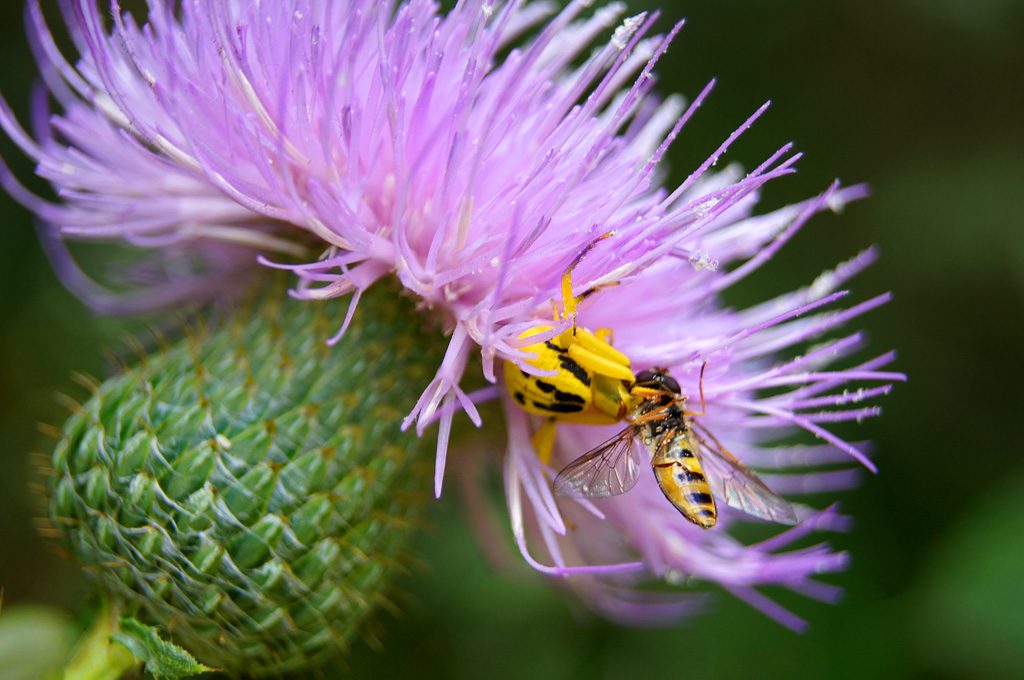
I discovered yellow spiders hiding among the the thistles. I assumed they were waiting for unsuspecting prey. I took some photos, downloaded them to my computer and posted them to this blog under the title Dangerously Alluring Beauty.
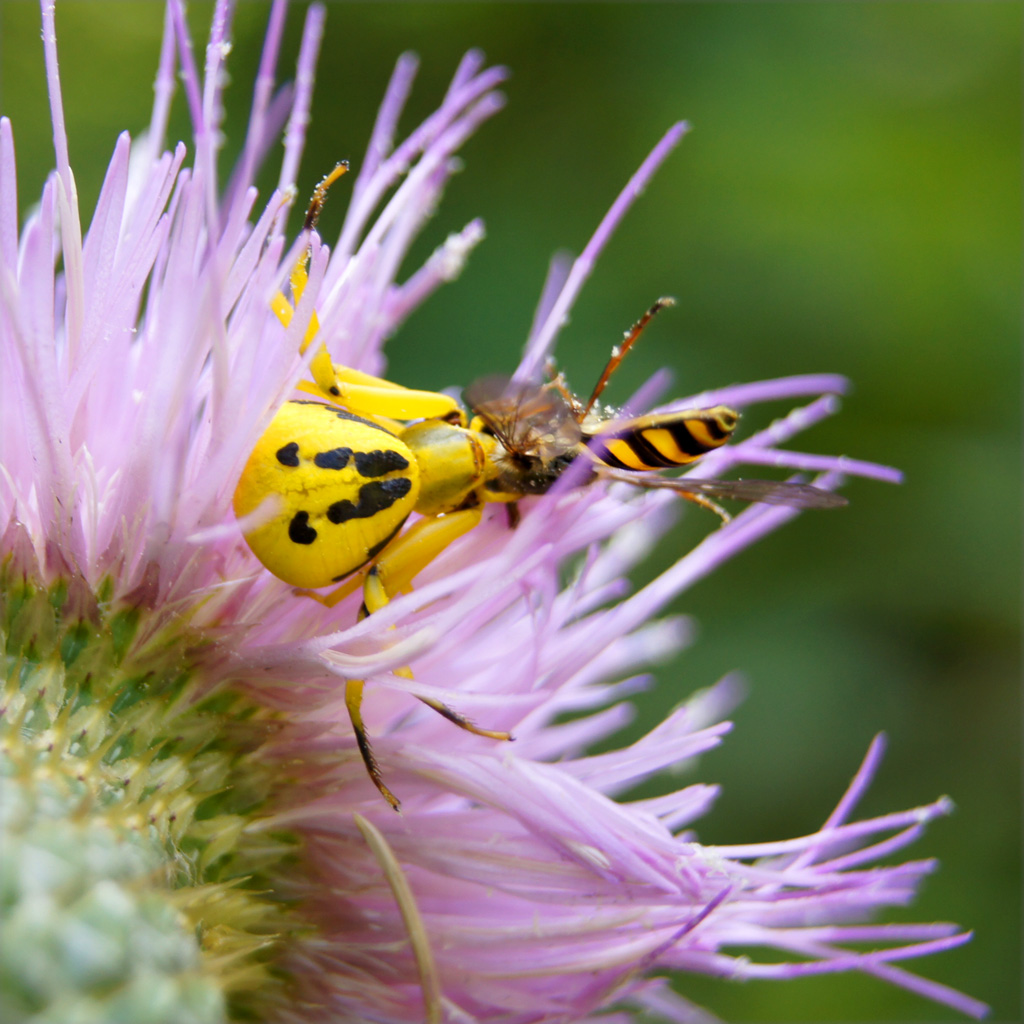 Several hours later, I went back to check on them. I was right! This is the same thistle and spider from the previous post.
Several hours later, I went back to check on them. I was right! This is the same thistle and spider from the previous post.
As you can see, a small bee, buzzing from flower to flower, attracted by the thistle, received an instant invitation to lunch.
The image on the right is the same scene from a different angle.
I wish I had hung around long enough to catch the action live. However, it just so happens, when I finished photographing this carnage, I noticed a similar yellow spider, poised with arms open wide, waiting for a its meal on a yellow flower. Then a bug came along. I started snapping pictures. The bug walked around the flower until it finally came face to face with the spider…and then…
You’ll have to watch for those images in a future post to see how it turned out.
To view larger versions of either of these photos, just click on them.







